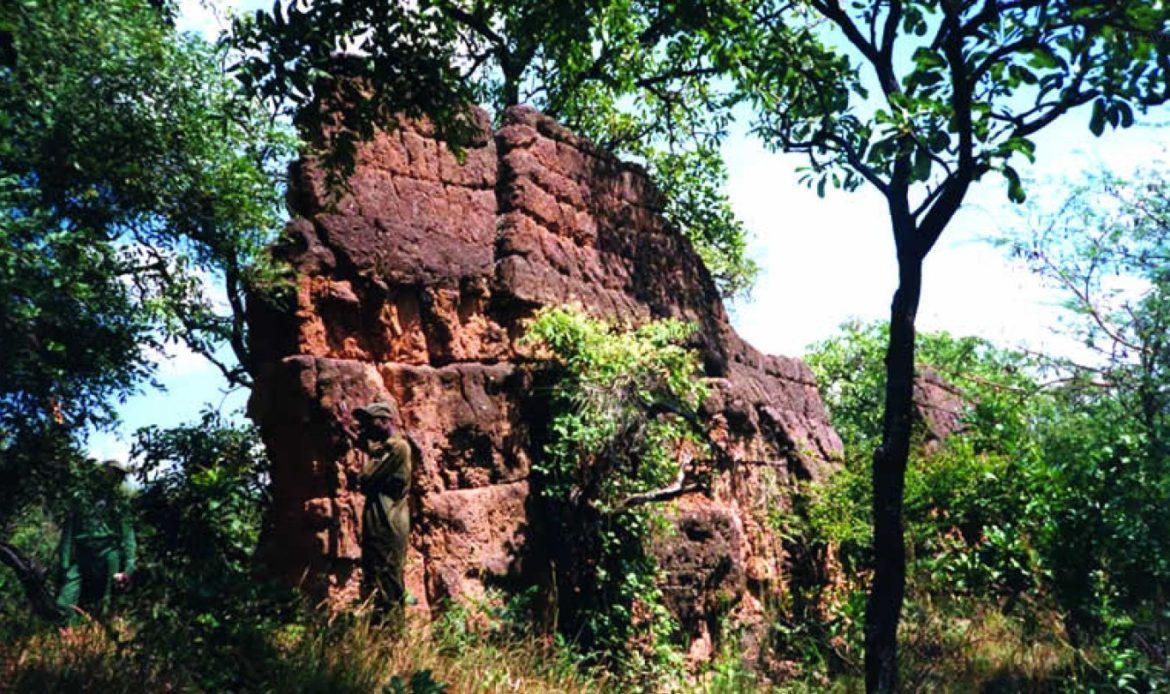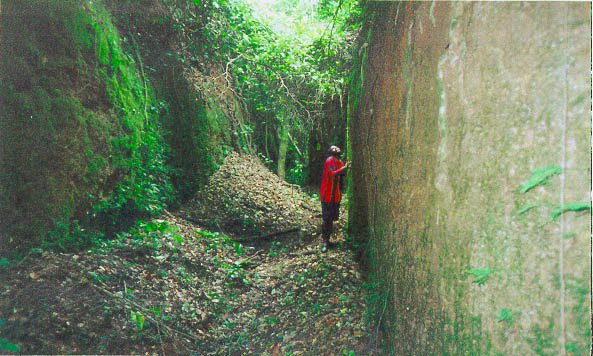Sungbo’s Eredo

The fascinating size and construction of Sungbo’s Eredo drew worldwide media attention in 1999 when Dr Patrick Darling, a British Archaeologist surveyed the site and declared his interest to preserve and make it prominent. Before this time, the Eredo was merely known outside the four walls of the Yoruba community. Fast forward to 2017, Olufeko, a Nigerian technologist led a freelance team that brought the location and its narrative back to social dialogue. Today’s Saturday Small Chops captures the sophistication of Sungbo’s Eredo Monument and some interesting facts surrounding it.
Second in size only to the Great Wall of China, Sungbo’s Eredo was built between 800-1000 AD, covering 2,500 square miles with more than 500 interconnected communal enclosures. It is located in Ijebu-Ode, Ogun State, Nigeria and served as a system of the defensive wall at a time when Southern Nigeria was faced with political confrontations. The wall also served as means of unifying an area of diverse communities into a single kingdom.
Often regarded as the Great Wall of the Yoruba Kingdom, the erection of the monument was partly inspired by the construction of similar walls and ditches in Western Nigeria such as earthworks around Ile-Ife, Ilesha, and the Benin Iya. Most of these walls were manually built without modern construction equipment, showing the complexity of early Nigerian society.
The length of the wall consists of a 160-kilometre-long series of ramparts with unusually smooth walls and a bank in the inner side of the ditch. The ditch forms an uneven ring around the ancient Ijebu Kingdom, with the walls flanked by trees and other vegetation, making the ditch a green tunnel. Sungbo’s Eredo site reveals the early engineering innovation of a small indigenous group and captures the legacy, vision and powers of a woman that has stood the test of time.
Read Also: The Salt Lakes of Ebonyi and its Popular Initiation Ceremony
Members of the modern-day Ijebu society attribute the Eredo to Oloye Bilikisu Sungbo, a wealthy and industrious woman. According to them, it was named in her honour. The Eredo is located close to her grave in Oke-Eiri, the north of the Eredo and it is often visited by tourists. Some historians have even connected Oloye Bilikisu Sungbo with the legend of the Queen of Sheba, a figure mentioned both in the Bible and Quran.

To date, the site drives curiosity on the mystery surrounding its structure and recently, attention has been drawn to developing it. As pilgrims grace the Eredo annually during the Easter celebration, discussions on its significance are frequently raised.
Although on Nigeria’s tentative list of potential UNESCO World Heritage Sites, the historical location neither tops the chart of many tourists nor is widely visited by Nigerians. Following this discovery, and the recent visit of the French Ambassador Mr Jerome Pasquier, to the Eredo Kingdom, the site will soon join the global monuments and place Nigeria as a global tourists’ hub.
To appreciate Eredo’s architectural feat, the best time to visit is during the dry season.
What impact do you think the development of the Eredo site will bring to the Nigerian economy? Please share your thoughts with us.
